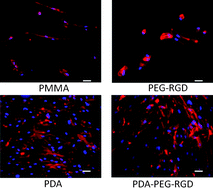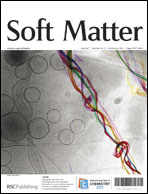Polydopamine coatings enhance biointegration of a model polymeric implant
Abstract
The biointegration of implants affects their function, stability and safety. Although most research on this topic has focused on bone and other hard tissues, biointegration with soft tissues is important in numerous applications, such as in prosthetic corneas. Here, we have adapted polydopamine-based adhesive surface chemistry to enhance the biointegration with soft tissue of a model


 Please wait while we load your content...
Please wait while we load your content...